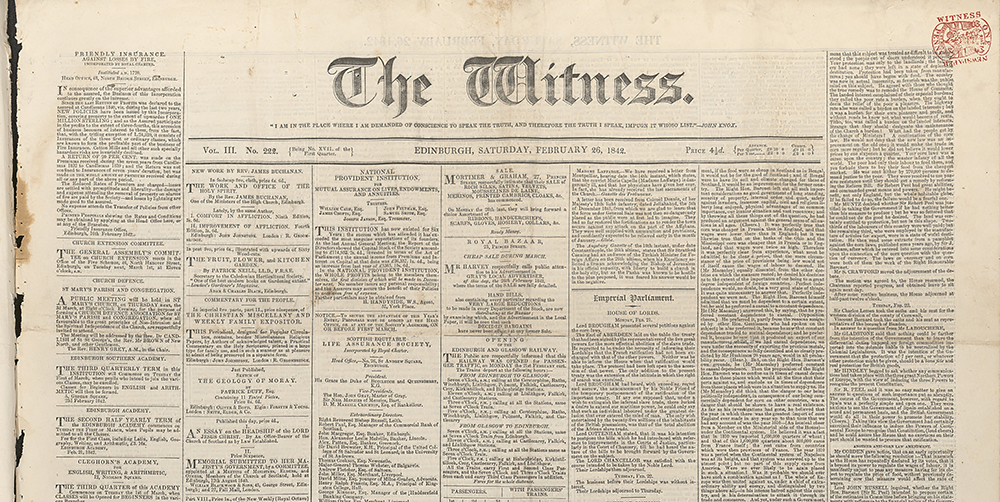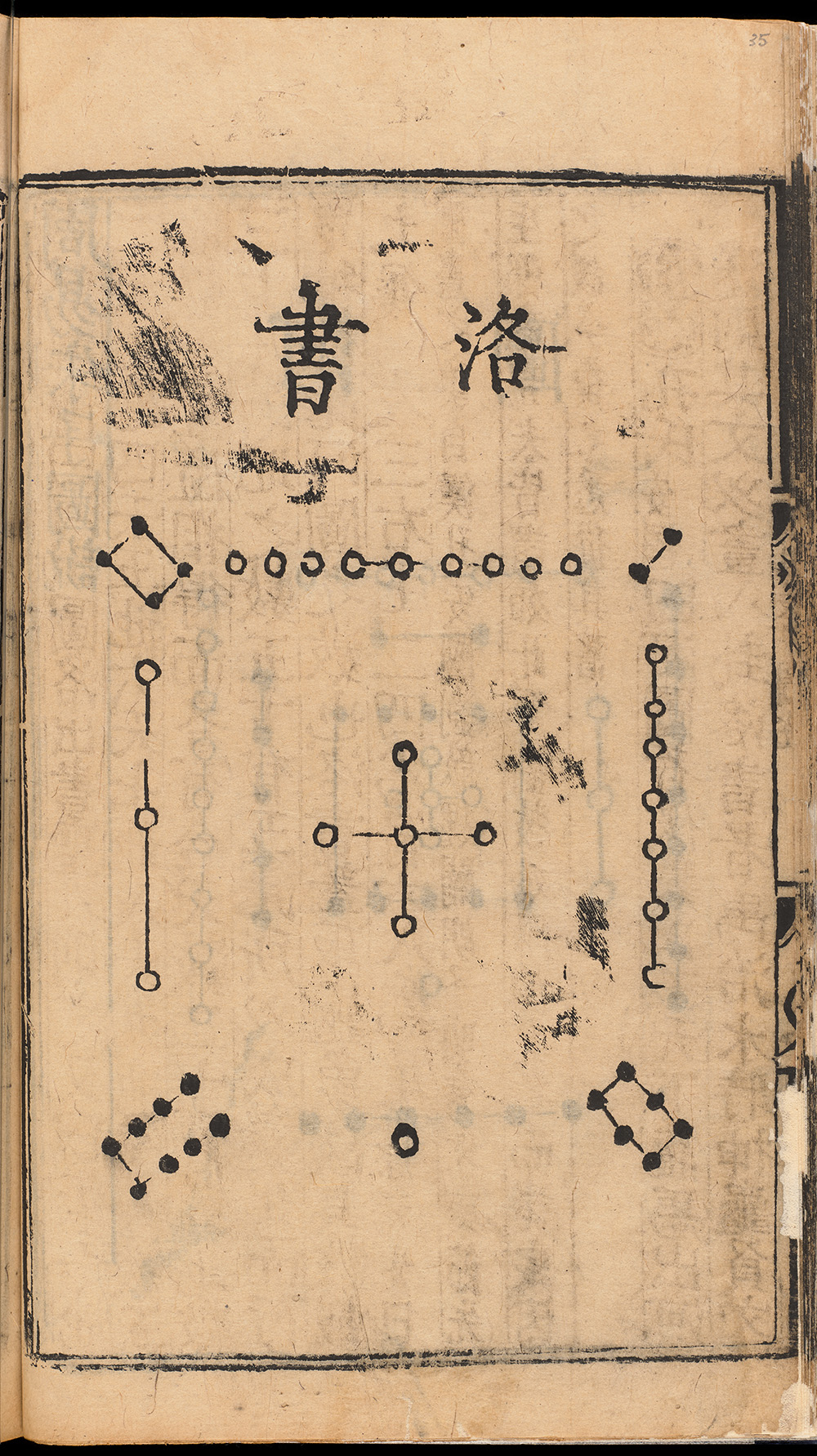
We have started digitising The Witness newspaper!
This twice weekly newspaper was created by the Church of Scotland in 1840 and edited by Hugh Miller (see https://en.wikipedia.org/wiki/Hugh_Miller ), an influential writer, geologist and stone mason. The Church of Scotland wanted a newspaper that reflected a Christian outlook, as well as news and comment from across Scotland. In 1843 The Church of Scotland was faced with 200 ministers walking out citing political interference, an event which came to be known as the Disruption, and led to the Free Church being established. Presbyterianism is founded on the basis that the people make the decisions, not an elite hierarchy, and the only head of the church, is God. This makes The Witness newspaper a fantastic primary source covering a significant event in Scotland’s social and religious history, and as such, a prime candidate for digitisation.




 Just in time for the Chinese New Year we can announce that our copy of the Zhouyi zhuanyi Daquan is now available to view on our collections website –
Just in time for the Chinese New Year we can announce that our copy of the Zhouyi zhuanyi Daquan is now available to view on our collections website – 


